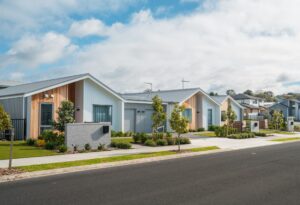 Turnkey investment properties are frequently promoted as the ultimate solution for rental property investors—move-in ready, low-maintenance, and a rapid route to steady rental income. They might appear as the perfect investment, but hidden risks of turnkey properties can startle even experienced investors.
Turnkey investment properties are frequently promoted as the ultimate solution for rental property investors—move-in ready, low-maintenance, and a rapid route to steady rental income. They might appear as the perfect investment, but hidden risks of turnkey properties can startle even experienced investors.
From unexpected maintenance costs to subpar renovation work, turnkey investment properties may introduce obstacles that impact your bottom line. In this article, we delve into the potential pitfalls of turnkey properties and provide guidance on how investors can avoid costly mistakes.
What Are Turnkey Properties?
A turnkey property is a fully renovated home or apartment building that an investor can purchase and immediately rent out. These properties are often sold by companies focused on the restoration of older properties.
Turnkey investments hold significant appeal for rental property owners because they require minimal effort to prepare them for tenants. By renting the property promptly, buyers can secure immediate cash flow without undertaking renovation or major repairs.
Hidden Risks of Turnkey Properties
On the surface, turnkey properties seem like ideal investments for rental property owners aiming to bypass lengthy and expensive renovation costs. Yet, even newly renovated properties can have hidden issues, leading to unexpected maintenance costs.
For example, the quality of the renovations may be dubious, especially if done without proper permits or licenses. Some turnkey properties undergo renovations that are not up to code, creating considerable problems for property owners down the line.
Another potential risk of turnkey properties concerns property values. Some turnkey properties are offered at inflated prices that don’t reflect current market values. As the property is renovated, sellers may demand prices higher than other properties in the area.
Due to elevated pricing, turnkey properties rarely offer the same potential for appreciation and equity growth as buying a fixer-upper. If investors aren’t vigilant, they could overpay for a property that is slow to gain in value, reducing cash flows.
How to Mitigate the Risks of Turnkey Properties
While hidden risks when buying turnkey properties exist, strategic steps can help you continue investing wisely. Performing thorough due diligence is a key approach to minimize risk.
Regardless of the property you are considering, it’s vital to meticulously examine the property’s history and condition. Go beyond aesthetic upgrades. If possible, schedule a professional inspection, paying close attention to potential issues with the property’s structure or significant systems.
It’s also crucial to conduct a detailed market analysis to confirm the property aligns with long-term market growth potential. Partner with a reputable real estate agent and leverage local market experts to collect critical data for an informed decision about the property. Professionals with experience in turnkey properties are especially beneficial.
Lastly, when proceeding with the purchase of a turnkey property, budget for hidden maintenance and repair costs and implement a proactive property maintenance plan. This foresight can prevent costly surprises, ensuring your investment yields solid returns throughout your ownership.
Weighing the Risks and Rewards of Turnkey Investments
While turnkey investment properties can be profitable for many investors, approaching these properties with caution and a clear strategy is essential. By conducting thorough research and seeking the help of qualified professionals, you can better evaluate the risks and rewards of investing in turnkey properties.
Considering incorporating a turnkey property into your rental portfolio? Reach out to the Real Property Management Wake County office to learn how we can assist you in developing a profitable investment strategy in Fuquay-Varina and surrounding areas. Contact us online or call us at 919-747-3488 today!
We are pledged to the letter and spirit of U.S. policy for the achievement of equal housing opportunity throughout the Nation. See Equal Housing Opportunity Statement for more information.


